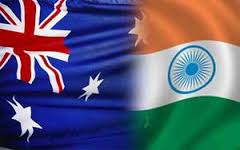 The Australian government, through the Australia-India Strategic Research Fund (AISRF), would collaborate with Indian researches in the field of agriculture, mining, energy, health etc. The Australian government has earmarked $84 million to be spent over three years in creating infrastructure, awarding fellowship and scholarship to promote research between the two countries.
The Australian government, through the Australia-India Strategic Research Fund (AISRF), would collaborate with Indian researches in the field of agriculture, mining, energy, health etc. The Australian government has earmarked $84 million to be spent over three years in creating infrastructure, awarding fellowship and scholarship to promote research between the two countries.
“The Australian government greatly values strong relationship with India, particularly in education and research. We have a roadmap to promote bilateral research between the two countries. During his visit to Australia, Prime Minister Narendra Modi identified sectors like agriculture, mining, energy, health etc for research, so we have decided to enhance cooperation between the two countries in these areas, ” said Australian Minister for Education and Training Christopher Pyne, who is in India to promote research collaboration between the two countries and also to highlight the opportunities for enhanced collaboration between Australia’s world-class education system and Indian institutions.
The AISRF is Australia’s largest fund dedicated to bilateral research with any country and one of India’s largest sources of support for international science.
The AISRF helps Australian researchers from public and private sectors to participate with Indian scientists in leading-edge scientific research projects and workshops.
Taking a step forward in this direction, the minister on Saturday officially opened new facilities at the Indian Institute of Technology Bombay (IITB)-Monash Research Academy.
The collaboration between the IITB and Monash University will see students receive a joint PhD from both institutions, with the added benefit of exposing a large cohort of young researchers to cutting-edge international research.
“The Australian government, through the AISRF, was one of the early contributors to this joint venture, providing $1.5 million in seed funding to establish the IITB-Monash Research Academy,” he said.
Meanwhile, he also visited Delhi Public School and launched a pilot project linking schools in India and Australia.
The Australia-Asia Building Regional Intercultural Dialogue and Growing Engagement, or BRIDGE, connects Australian teachers, students, and school communities with their peers in Asia so they can exchange knowledge.
“The BRIDGE programme connects Australian schools to schools around the world so that students and teachers alike can learn from one another and build lasting cultural ties and skills,” Pyne said.
“Strengthening partnerships between school leaders, teachers, and school communities in India and Australia helps us build strong education relationships and share our ideas and knowledge,” he said.

